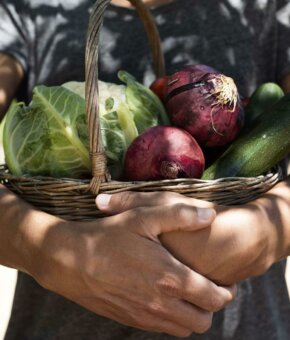
From urban food forests and indoor aquaponic farms to roof gardens on top of supermarkets, urban beekeepers and regenerative farms on the outskirts of cities: when it comes down to sustainable urban agriculture, the possibilities are endless. But no matter what form(s) a city chooses to embrace, they all have similar ecological, social and economic benefits.
Everywhere around the world, city planners, mayors and other urban developers are faced with urgent societal challenges. How can I make my city a cooler and more climate resilient place? How will we provide an ever-growing group of urban dwellers with access to fresh, nutritious and sustainable food? And how can we create more livable urban environments?
As it turns out, urban agriculture could hold the answer to all of these (and many more) questions. Here are eight reasons why urban developers and engaged citizens alike should embrace sustainable urban agriculture:
1) Healthy food security
Having access to fresh and nutritious food is not a given for many urban dwellers, both in cities and slums alike. By growing fresh produce in cities, we can put a stop to Food deserts are regions where people have limited access to healthy and fresh food. This may be due to having a low income or having to travel farther to find healthy food options. More info: https://www.medicalnewstoday.com/articles/what-are-food-deserts#location and food insecurity, enabling hundreds of thousands of people to swap processed meals (or in some cases no meals at all) with fruit and veg.
Also read: meet the urban farmers bringing food justice to New York
2) Greener cities, happier people
Recent studies from the University of Wisconsin and the University of Exeter confirm what many scientists have suspected for years: there is a strong correlation between people’s wellbeing and urban green spaces. Not only do residents claim to be happier when their neighborhoods are greener, it also improves their physical and mental wellbeing. And what better way to greenify your city than by turning it into one big edible urban food forest?
Related: How we can place the wellbeing economy at the heart of our cities
3) Boosting biodiversity
Speaking of which: Urban food forests are diverse ecosystems that mimic natural forests. The different layers of a food forest, ranging from tall fruit and nut trees to fruit bearing shrubs and bushes, vines, roots and other ground-hugging plants, offer a variety of fresh, local, organic produce. are a great way to boost biodiversity whilst providing urban dwellers with fresh, local and organic produce. But food forests are not the only type of urban agriculture that can boost biodiversity in cities. From urban beekeeping to regenerative farms: almost all forms of sustainable urban agriculture hugely enrich a city’s ecosystem.
4) Less food waste
Roughly a third of the world’s food is never eaten, making land and resources used and greenhouse gases emitted in producing it unnecessary. By bringing sustainable food production back to (mega)cities, we can close the gap between farm and fork and reduce spillage that occurs along the way. In addition, urban agriculture makes it possible to create circular networks on a city level – like this enterprise does in the Dutch city of Utrecht – enabling both civilians and businesses to make use of each other’s ‘waste’ streams.
5) Saving water through sustainable urban agriculture
In a world with rising temperatures and longer periods of drought, fresh water is becoming increasingly more scarce. By reusing the city’s wastewater to irrigate crops and capturing rain water on green roofs, we can save and protect this ecosystem service that is crucial to all life on Earth.
6) Climate resilience
By 2050, over six billion people will live in cities. In order to mitigate the effects of climate change in these urban environments – such as floods, droughts and heat waves – according to the University of Wageningen, nature-based solutions like green roofs, green facades, green spaces and urban forests are promising solutions. And of course, wherever you read ‘green’, you can easily read ‘green and edible’.
Also read: Growing food to cool down the city. How urban agriculture improves climate resilience.
7) Closing the gap between farm and fork
The lack of connection between people and food is causing many social and ecological challenges. From obesity and biodiversity loss to inadequate animal wellbeing; we’ve lost grip on how our food is being produced and thereby on the consequences of its production methods. In addition, our awareness of what it takes to produce healthy, local and sustainable food has disappeared. And with it our willingness to pay a fair price.
By bringing sustainable food production back to cities, we can close the gap between farm and fork. So-called Community Supported Agriculture farmers are playing an interesting role in this matter – since they do not only invite consumers onto their farm, but are in fact making them part of it.
8) Jobs and future perspective
And last but not least, sustainable urban agriculture has the potential to pick up whole communities by providing people with honest jobs and perspectives for the future. Sounds interesting? These farmers are creating jobs that leave no one behind.
Looking for more stories about the potential of sustainable urban agriculture? Subscribe to our monthly newsletter or watch our online documentary. Inspiration guaranteed.



